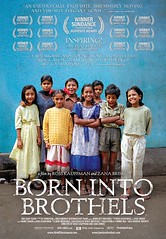“Can we try it more mysterious, with that mystique from the East?… Channel a late night sex chat ad… Maybe go back further into your heritage … A little more ethnic.”
Remember those racist-alicious ads from Michigan senatorial candidate Pete Hoekstra, the ones where the docile, limpid eyed, bike-riding Asian woman thanked “Debbie Spend It Now” for spending so much American money that she singlehandedly ruined the U.S. economy while giving more jobs to China? Well, that Sinophobic Super Bowl ad promptly inspired several spoofs including this one from Funny or Die, and this clever one from Kristina Wong that I found recently on Disgrasian.
In it, Wong plays an actress obviously starring in a “Debbie Spend it Now”-type commercial. The disembodied (presumably white, male) director’s voice is off-camera, insisting that Wong play her role with more ethnic “authenticity.” At one point, he asks her to read the lines like her mother might. When Wong delivers the lines in an American accent, the frustrated director corrects, “But that’s the same as you read it last time, is that how your mother talks?” Wong nods, deadpan. “She was born in San Francisco.” Later, he reminds Wong that she is “in a rice paddy.” To which she exclaims, “Oh, I thought we were in Runyon Canyon.”
Kristina Wong’s spoof speaks to the continued conflation of Asian American and Asian identity. No matter how many years, or generations, we’ve been in this country, we Asian Americans remain ‘contingent citizens’ and ‘perpetual foreigners.’ (You’ve heard the question: “Where are you from? … No, where are you really from?”)
Wong’s spoof also speaks to the sexualized, passive tropes surrounding Asian American womanhood. In a recent talk I gave for Wellesley College’s GenerAsians Magazine, I suggested that three tropes still seem to encapsulate much of how Asian American women continue to be perceived:
Butterflies: This Madame Butterfly/Miss Saigon trope of submissive-Eastern-femininity-waiting-forlornly-for-her-Western-lover-to-return, has a not-so-hidden sexual undercurrent. Don’t be fooled by her shyness; she’s lush, lavish, and sensual beneath the surface! This is what I affectionately call the “Kama Sutra” underwing of the butterfly (and in so doing, bring South and East Asians into the same awesome disgusting trope).
The passive-yet-sexual butterfly is easily seen in all sorts of modern cultural spaces, including Asian and Asian American book covers, as demonstrated by this helpful instruction manual constructed by Sociological Images. My favorite tip is Element #2: “Fans (preferably held so as to partly obscure a woman’s face (or genitals), and if you can get blossoms on the fan, you get bonus points).”

Courtesy Red Light Films, HBO/Cinemax Films
Slumdogs: Funny how these tropes go along animalistic lines, right? Okay, maybe not so funny. Anyway, this second trope is the one modeled on the ever popular fascination with “poverty pornography,” as exemplified by Slumdog Millionaire and other films. Like the butterfly trope, the Slumdog fundamentally undercuts Asian women’s agency.
To read the rest of this essay, please visit Racialicious!
No comments:
Post a Comment